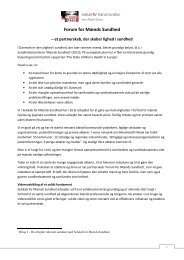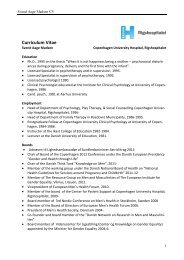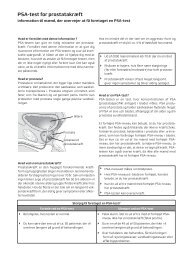Untitled
Untitled
Untitled
You also want an ePaper? Increase the reach of your titles
YUMPU automatically turns print PDFs into web optimized ePapers that Google loves.
The Male Population<br />
Main points<br />
• There is an increasing longevity of much of the male population, but this is<br />
coupled with a decline in the birth rate.<br />
• If the current projections for the changing male population are correct<br />
there will be a reduction of nearly 24 million working age men (aged 15-64<br />
years) across the EU27 by 2060 and an increase in the number of men over<br />
65 by some 32 million.<br />
• Young men are living at home for longer and deferring the age of<br />
marriage.<br />
• Boys and girls are in the education system for longer, but boys seem to<br />
be missing out on a full educational experience, with more leaving school<br />
prematurely and fewer entering tertiary or adult education.<br />
• Patterns of work are changing, with higher unemployment levels than<br />
women and being less likely to have a job for life.<br />
• Early migration and asylum seekers are predominately male, with a greater<br />
degree of migration occurring within Europe, reducing the male population<br />
in the home countries.<br />
• Men in vulnerable positions such as Migrants / Asylum seekers, Prisoners,<br />
the homeless or the disabled are all facing challenges to their health and<br />
well-being.<br />
Summary<br />
The emerging demographic picture will have a marked impact on men over<br />
the coming decades, with implications for how men live, are educated, and<br />
work. An expanding older population will put an increased strain on resources<br />
at a time when the younger population is diminished in number. Changing<br />
patterns of work and fewer jobs for men is occurring at a time when European<br />
policy is striving to retain more men at work for a greater proportion of their<br />
lives. The message that we need a highly qualified workforce still seems to be<br />
missing a large proportion of men, with relatively few entering into tertiary<br />
education or taking up adult education opportunities. More men are living<br />
at home for longer before getting married and family size is reducing with<br />
children being born later in married life. For many men there is the prospect<br />
of divorce and the health challenges that this brings.<br />
4<br />
The movement of men across borders through emigration, or asylum seeking<br />
may be plugging some of the demographic gaps in the younger population<br />
for some countries, but internal migration within Europe has a negative effect<br />
on the workforce in the home countries. It also brings with it challenges in








